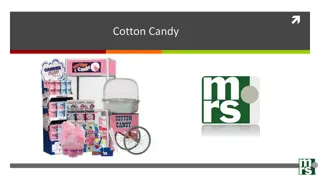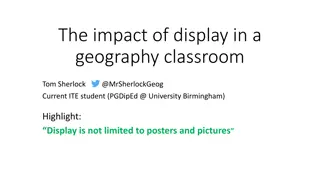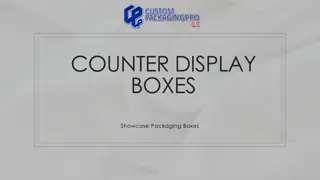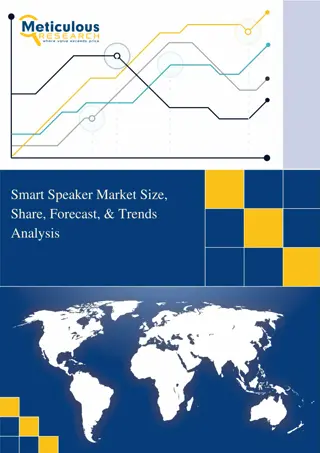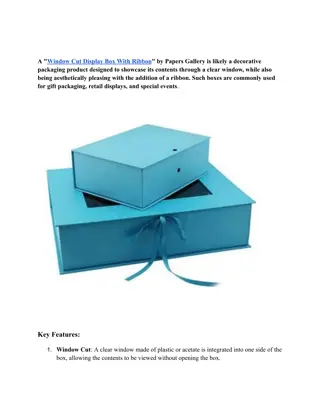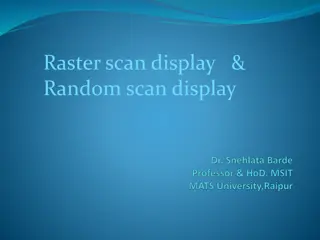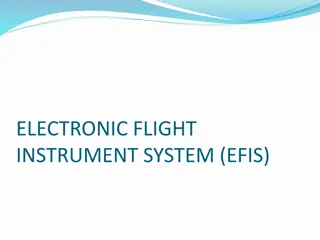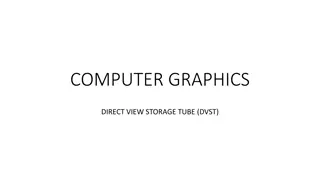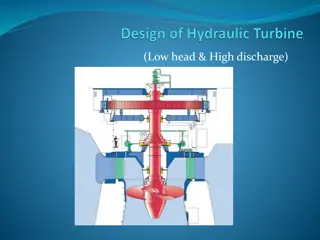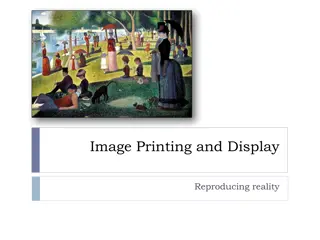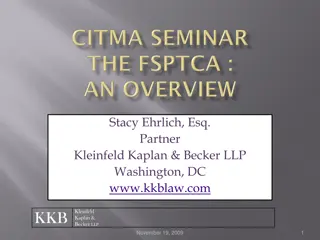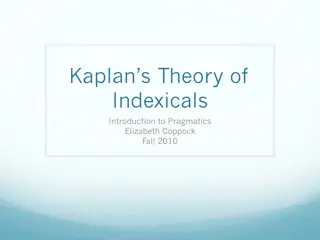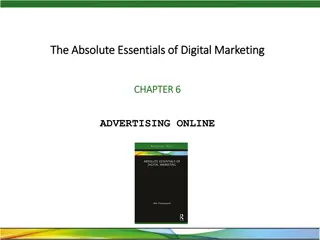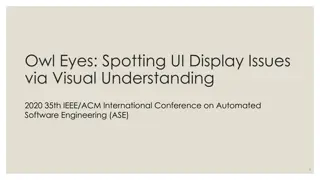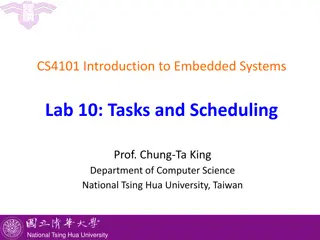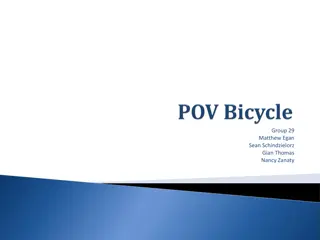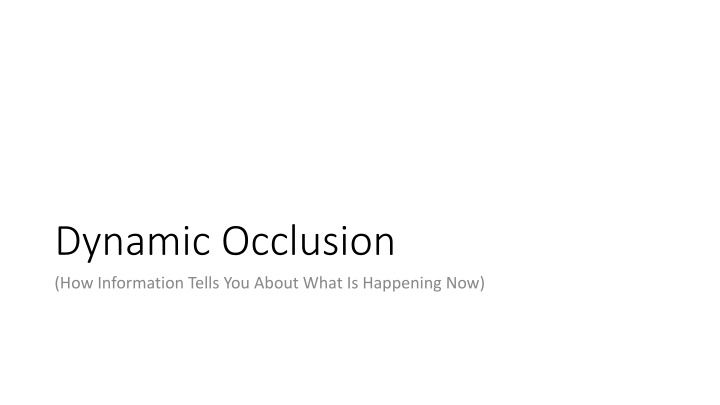
Understanding Dynamic Occlusion in Visual Perception
Explore how dynamic occlusion provides information about ongoing events in visual perception. Learn about the kinematic patterns, cognitive judgments, and implications for object tracking through occlusion. Discover how optical texture elements and motion create the illusion of objects passing in front of each other while both continue to exist.
Download Presentation

Please find below an Image/Link to download the presentation.
The content on the website is provided AS IS for your information and personal use only. It may not be sold, licensed, or shared on other websites without obtaining consent from the author. If you encounter any issues during the download, it is possible that the publisher has removed the file from their server.
You are allowed to download the files provided on this website for personal or commercial use, subject to the condition that they are used lawfully. All files are the property of their respective owners.
The content on the website is provided AS IS for your information and personal use only. It may not be sold, licensed, or shared on other websites without obtaining consent from the author.
E N D
Presentation Transcript
Dynamic Occlusion (How Information Tells You About What Is Happening Now)
Move the boxes around to make the illusion yourself Pro tip move the bigger box, as in Powerpoint selecting the small one adds a border the messes with the effect
Press the space bar to show the animation
Kinematics Can Specify Dynamics Progressive Occlusion (Gibson et al, 1969; Kaplan, 1969) Dynamical Event: One surface going out of view behind another (becoming progressively occluded but continuing to exist) Kinematic Information: Deletion of optical texture at the leading edge, accretion of optical texture at the trailing edge (optical elements going being destroyed and created) Perception: the dynamical event persisting surface becoming occluded and de-occluded Judgments: people never report the accretion or deletion, but the occlusion Multiple object tracking: can still be tracked through an occlusion but not an actual disappearance/reappearance (Scholl & Pylyshyn, 1999)
Multiple Object Tracking Survives Occlusion but not Disappearing MOT: Occlusion Baseline http://www.yale.edu/perception/Brian/demos/MOT.html
People track objects Occlusion specifies moving in and out from behind something Implosion/explosion specifies coming in and out of existence James J Gibson (1966) Scholl, B. J., & Pylyshyn, Z. W. (1999). Tracking multiple items through occlusion: Clues to visual objecthood. Cognitive Psychology, 38, 259-290.
The particular kinematic pattern (optical texture elements going out of view along a leading edge, into view a long a trailing edge) is detected and leads to the perception of one object passing in front of another with both continuing to exist




